Determining the ideal grow light height above plants is a pivotal aspect of successful indoor gardening. This affects the health and yield of your plants and optimizes your energy usage.
The distance between grow lights and plant canopy involves a delicate balance: too close, and you risk leaf burn and excessive heat stress; too far, and you may see leggy growth or insufficient light penetration, detrimental to plant health.
Therefore, understanding the optimal distance is essential for anyone using LED lights, growing tents, or engaging in any form of indoor gardening, from nurturing seedlings to cultivating flowering plants.
This article explores the critical considerations, including light intensity, plant growth stages (from seedlings to the flowering stage), and the type of light used.
Whether it’s LED grow lights or a more traditional setup. We’ll delve into the factors influencing growth light height, such as Photosynthetic Photon Flux Density (PPFD), light distribution, and the specific requirements of different plant species.
Understanding the Importance of Grow Light Height
Why Light Height Matters
The positioning of grow lights above cannabis plants is a crucial aspect of indoor cultivation, significantly impacting plant health and yield. When lights are placed several inches or more away from the top of the plants, it primarily prevents excessive heat exposure.
However, grow light height influences more than just temperature control. If the area’s heat could be effectively managed, bringing grow lights closer could increase light availability for the plants, leading to more bud production using the same amount of electricity.
A cannabis plant thrives within a specific light-intensity range. When all plant needs are met, and it resides within this optimal light range, growth is only limited by genetic factors.
Light intensity below the desirable range leads to spindly stems and buds and prolonged development times. On the other hand, light intensity above the optimal range can cause nutrient problems, heat burn, light burn, or a combination of these issues.
As plants receive higher levels of light, they also increase nutrient uptake from the roots. This is particularly true when using powder or liquid nutrients, chemically available nutrients easily absorbed by the plant.
However, cannabis plants cannot selectively absorb nutrients; they uptake all available nutrients in the water. This indiscriminate absorption can lead to nutrient buildup in the plant, potentially causing a nutrient burn.
Common Issues with Incorrect Light Height
Incorrect grow light height can lead to several problems, including nutrient and light burn. Nutrient burn manifests as what appears to be nutrient deficiencies across the plant. This condition might mislead growers to increase nutrient levels, exacerbating the problem. The true issue often lies in the light being too close to the plant and not lacking nutrients.
Another significant concern is the bleaching of leaves and buds under intense light exposure. Leaves start to break down when exposed to excessive light for prolonged periods, showing symptoms akin to various deficiencies. However, these symptoms, including bleaching directly under the grow light, indicate that part of the plant struggles to process the light energy it receives. This condition can lead to reduced potency and smell in buds.
Proper placement of LED grow lights is vital for avoiding these issues. For instance, in a 4×4 growth space, it’s recommended to dim the grow light to about 30 to 50% during the early growth phase and maintain a distance of 18 to 24 inches above the plants. This approach ensures that plants receive adequate light without energy waste, as younger plants require less light than those in the flowering stage.
Adjusting light intensity and height according to the growth stage can mitigate problems such as photobleaching, which results in the whitening or yellowing of leaves and flowers 14.
Understanding the importance of growing light height is fundamental for cannabis cultivation. It involves a delicate balance between providing enough light for optimal growth and avoiding excessive light intensity that can lead to plant stress and damage.
By carefully adjusting the height and intensity of grow lights, growers can ensure their plants thrive throughout all stages of growth.
Factors Influencing Grow Light Height
Type of Grow Light
The grow light significantly impacts the optimal hanging height. LED grow lights, known for their efficiency and lower heat output, generally require different positioning than High-Intensity Discharge (HID) or T5 Fluorescent lights.
For instance, LED grow lights should be placed farther away from the plant canopy to prevent light burn, whereas T5 Fluorescent lights should be closer due to their lower intensity.
Each light type has a unique heat signature and spectrum output, influencing how close they can safely be to the plants without causing damage.
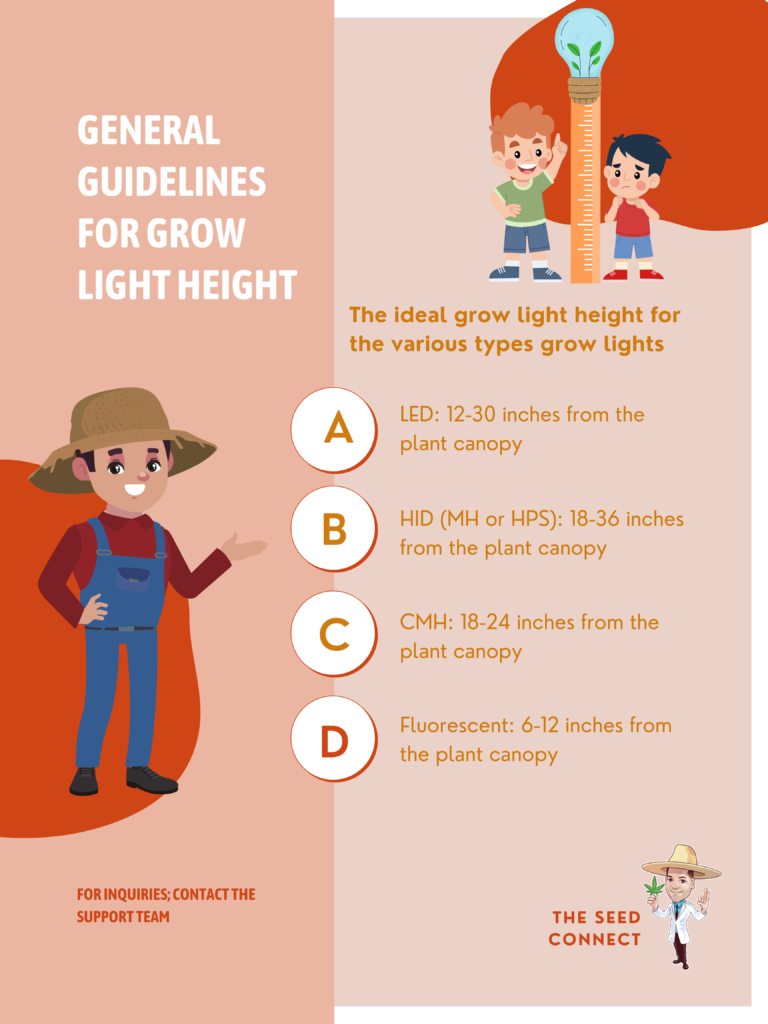
Plant Growth Stage
The plant’s growth stage dictates the required light intensity and thus influences the height at which grow lights should be positioned. During the seedling stage, lights should be hung higher to prevent stress on the delicate young plants.
As plants enter the vegetative stage, they require more intense light, necessitating a closer proximity to the light source.
In the flowering stage, lights may be brought even closer to support bud development, but care must be taken to adjust the height gradually to avoid stress.
Light Intensity (PPFD)
Photosynthetic Photon Flux Density (PPFD) is crucial in determining the appropriate grow light height from the plant canopy. PPFD measures the amount of light that reaches the plant, and different stages of growth require different PPFD levels.
For example, seedlings thrive under a PPFD of 100 – 300 μmol/m²/s, vegetative stages require 400 – 600 μmol/m²/s, and flowering stages need about 800 – 1000 μmol/m²/s.
Adjusting the height of the grow lights to achieve these PPFD levels is essential for optimal plant health and yield. Moreover, tools like PPFD charts and meters can help growers make precise adjustments and monitor the light intensity to ensure it meets the plant’s needs without causing damage.
Optimal Grow Light Heights for Different Growth Stages
Seedling Stage
For marijuana seedlings, it is crucial to set the LED grow lights at a height that prevents damage while fostering an environment conducive to early growth. Ideally, the lights should be 24-36 inches above the plant canopy.
This height helps avoid bleaching and stunted growth, common issues when the light source is too close during this delicate stage.
Additionally, maintaining this distance helps prevent the drying out of the soil, ensuring that the seedlings have a moist environment necessary for their development.
Vegetative Stage
As the marijuana plants enter the vegetative stage, their need for light increases significantly. The optimal height for LED grow lights during this stage is 12-24 inches from the top foliage of the marijuana canopy.
This range ensures the plants receive adequate light to build strong, healthy roots and stems, essential for a productive harvest.
However, growers should monitor the plants closely to prevent light-related issues such as bleaching, discoloration, or stunted growth. Adjusting the height of the grow lights may be necessary to maintain the right balance of light intensity.
Flowering Stage
During the flowering stage, the light requirements of marijuana plants change once again. The recommended height for LED grow lights is 16-36 inches above the plant canopy.
This adjustment is crucial as it supports the transition from vegetative growth to flowering. Keeping the lights within this range helps optimize the bud development and fruit production environment.
It’s advisable to gradually adjust the height of the lights to cater to the crop’s specific needs, ensuring that the plants receive adequate light without experiencing stress or damage.
How to Adjust Grow Light Height
Using Manufacturer Guidelines
Starting with the manufacturer’s recommendations for light height is a practical first step in setting up grow lights. These guidelines are tailored to the specific LED grow light model and consider factors such as light intensity and the type of plants being cultivated.
Cannabis growers must begin with these recommended distances to ensure the plants receive the optimal light without experiencing stress or burning.
Practical Tips for Adjusting Light Distance
To effectively manage the distance between grow lights and plants, growers should consider investing in high-quality lighting systems that allow for adjustable light intensity and height. This flexibility helps in accommodating plants at different stages of growth.
Regularly monitoring light intensity with meters or sensors is crucial, as it helps make precise adjustments to avoid light fluctuations that can affect plant health.
Additionally, positioning the lights strategically to ensure even coverage and minimal shadowing within the growing area is vital for uniform plant growth.
- Invest in Adjustable Lights: Choose to grow lights with features that allow easy adjustment of height and intensity to transition through different growth stages seamlessly.
- Monitor and Adjust Regularly: Use light meters to check the PPFD levels at various canopy points regularly. Adjust the light height to maintain the optimal intensity as the plants grow.
- Strategic Light Placement: Ensure that the lights are positioned to cover all plants evenly. Avoid hotspots or areas with low light intensity by adjusting the height and angle of the lights.
Monitoring Plant Response
Observing plant response is critical in adjusting grow light height. Poor growth, discoloration, or stretching indicate adjustments are needed. If plants exhibit signs of light stress, such as curling leaves or reduced vigor, it may be necessary to alter the light distance.
During low light periods, adjusting the lights closer can compensate for reduced natural light, ensuring consistent growth 39.
- Regular Observation: Check plants daily for any signs of light stress or insufficient light. Adjust the grow light height based on these observations.
- Use of Technology: Employ apps or devices that measure PPFD to ensure that the light intensity remains within the optimal range for the specific growth stage of the cannabis plants.
By implementing these strategies, growers can maintain the ideal light environment for their cannabis plants, leading to healthier growth and potentially higher yields.
Conclusion
Finding the ideal height for your grow lights is crucial to cultivating a healthy and bountiful cannabis garden. By understanding the factors that influence grow light height, following the general guidelines, and fine-tuning the height based on your plant’s needs, you can create the perfect lighting environment for your cannabis plants to flourish.
So, hang those grow lights with confidence and watch your indoor cannabis garden reach new heights!
FAQs
What is the recommended distance between plants and grow lights?
The distance between plants and grow lights can vary depending on the light’s wattage. For LEDs with a lower wattage, around 200 watts, keeping them 12-20 inches away from the plant’s top is suggested. For LEDs with a higher wattage of 1000 watts or more, a distance of 36-46 inches is recommended.
How can I tell if my grow lights are too close to my plants?
If your grow lights are too close, you may notice leaf burn. This is characterized by leaves turning white or yellow and becoming crisp, which ultimately leads to their death.
What should be the spacing between lights in a grow room?
For supplemental lighting that’s less intense, you can start with the grow light as close as 1 inch from your plant at the lowest brightness setting. As the plant grows, you should gradually move the light further away, up to 6 inches, while increasing the brightness to its maximum.
How far should I place a 1000-watt HPS light from my plants?
HPS lights come in 600-watt and 1000-watt options. For a 600-watt HPS, which covers a 3×3 to 4×4 grow space and emits less heat than a 1000-watt, the recommended distance from the canopy is about 16 inches. For a 1000-watt HPS, the suggested distance is approximately 20 inches away from the plant canopy.

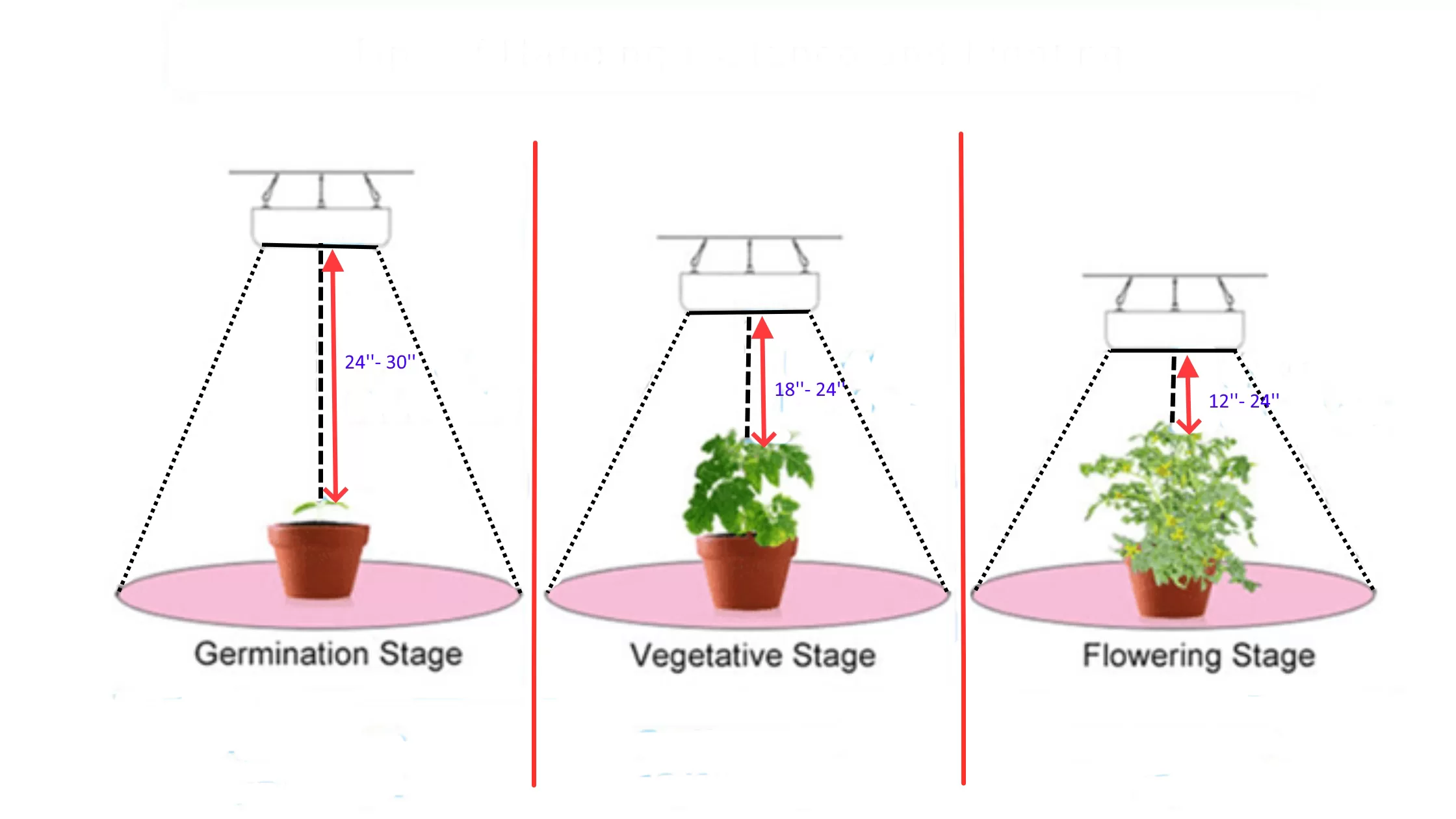

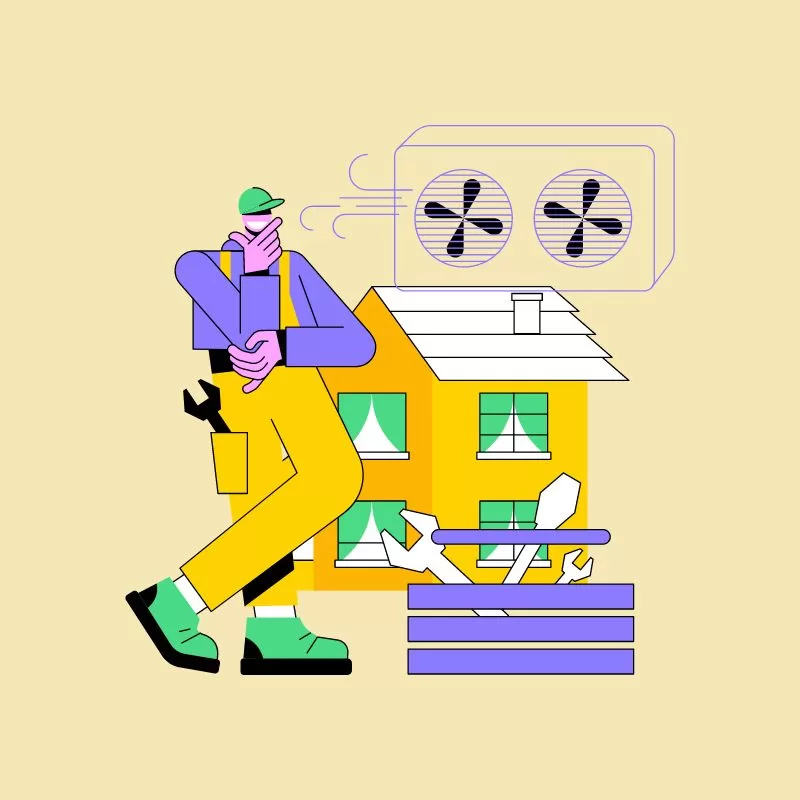
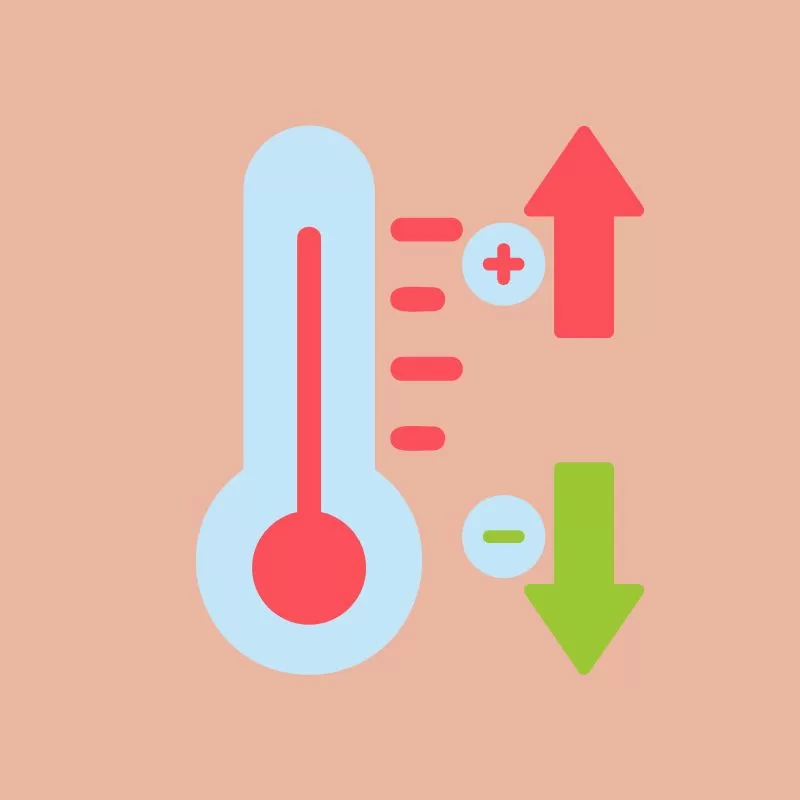
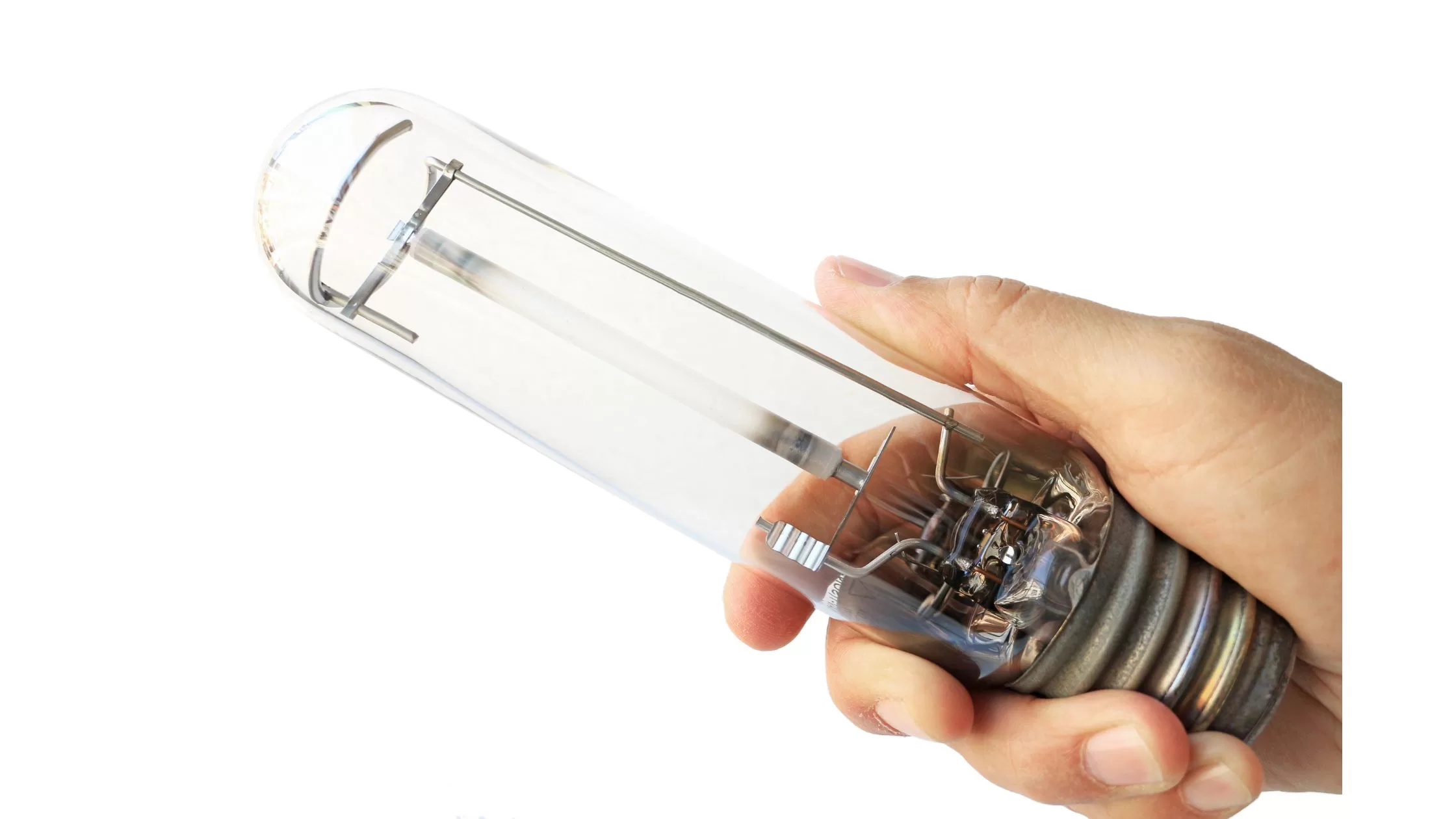
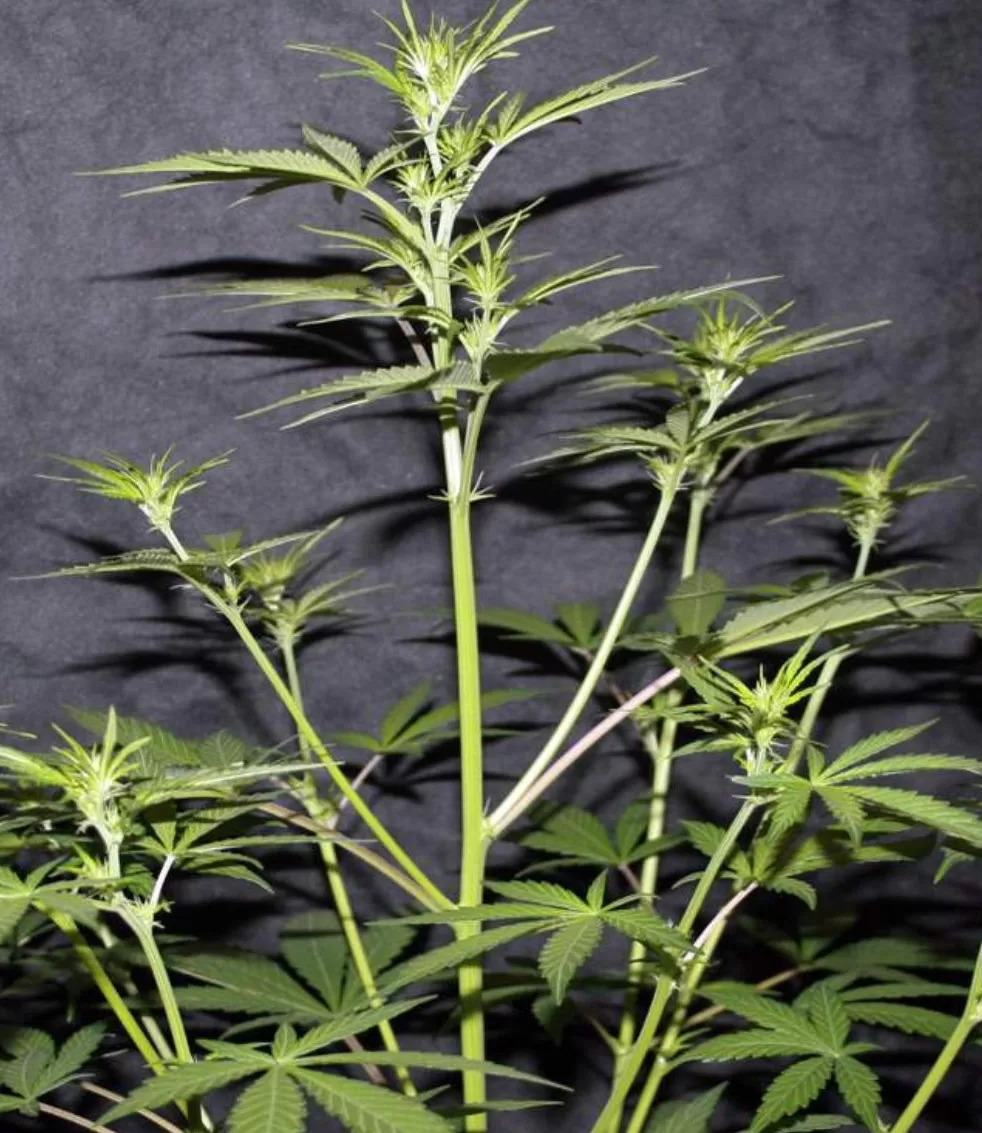




Hi Team!
Do you feel that your content isn’t drawing sufficient attention?
We want to offer you a complimentary article on a topic you haven’t covered yet. We’ve got a team of experienced writers making amazing content in 2024!
Curious to see some topics?
Kindly, let me know